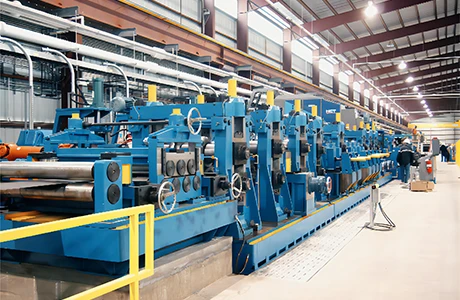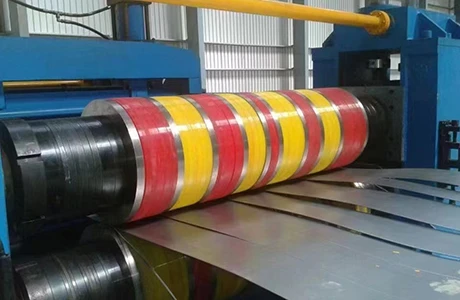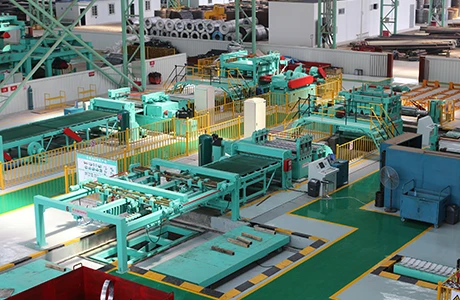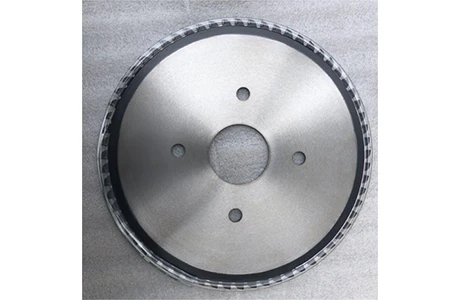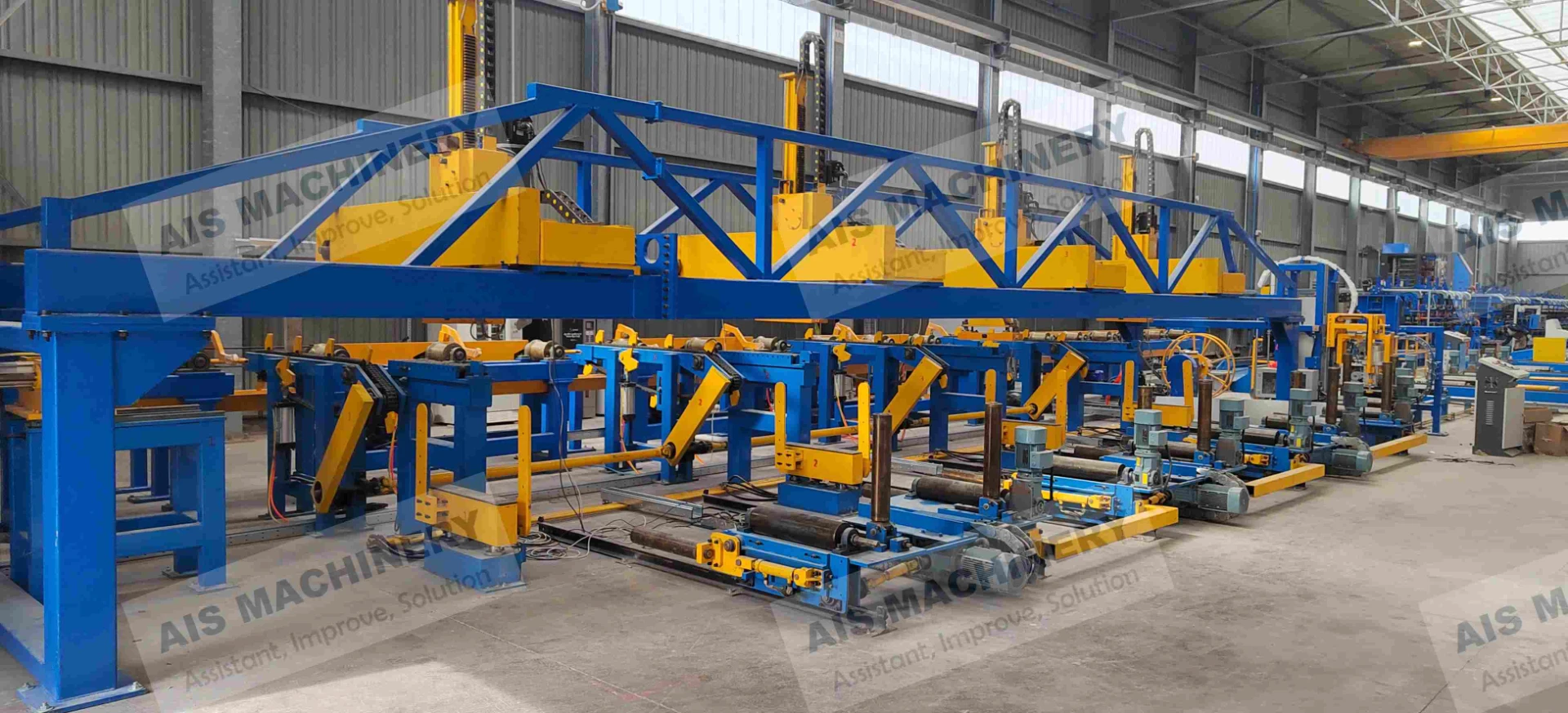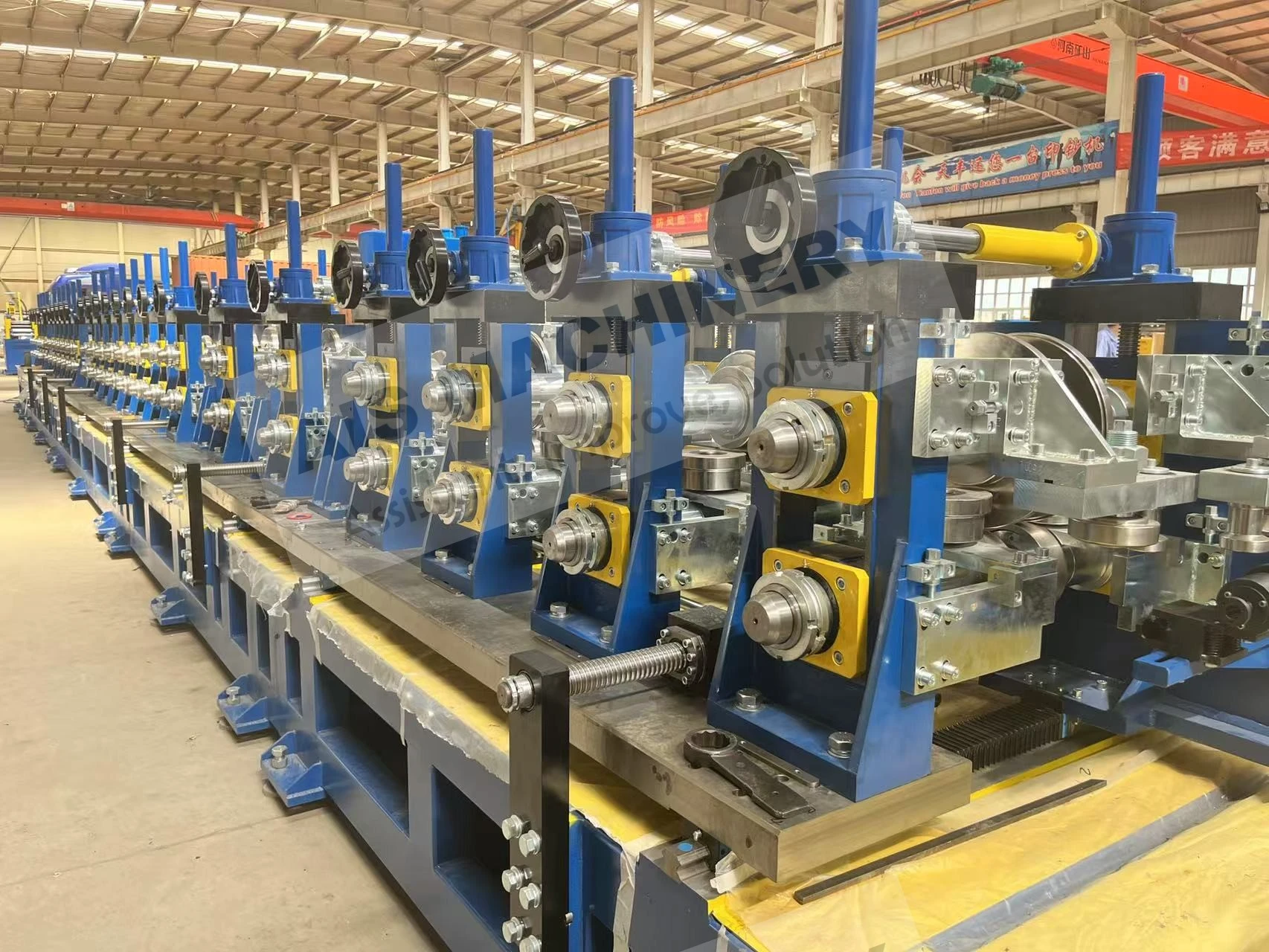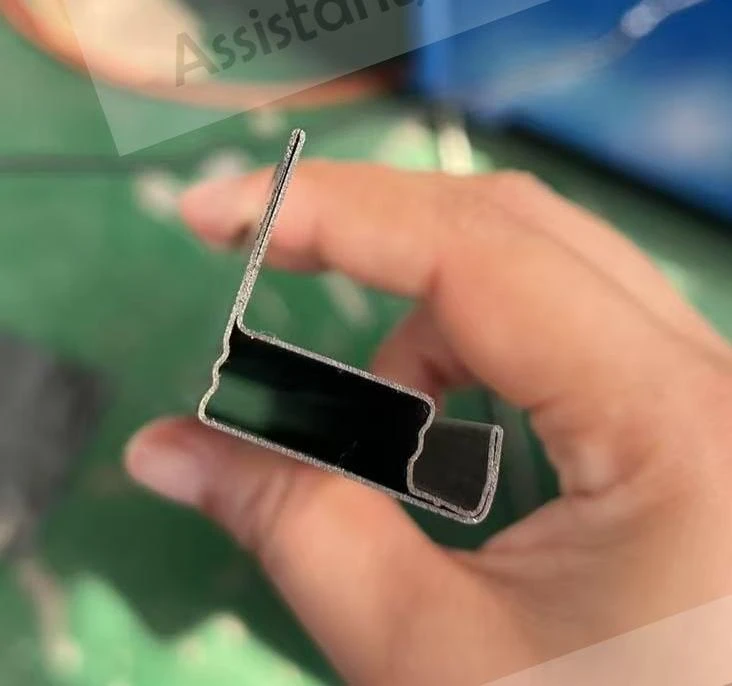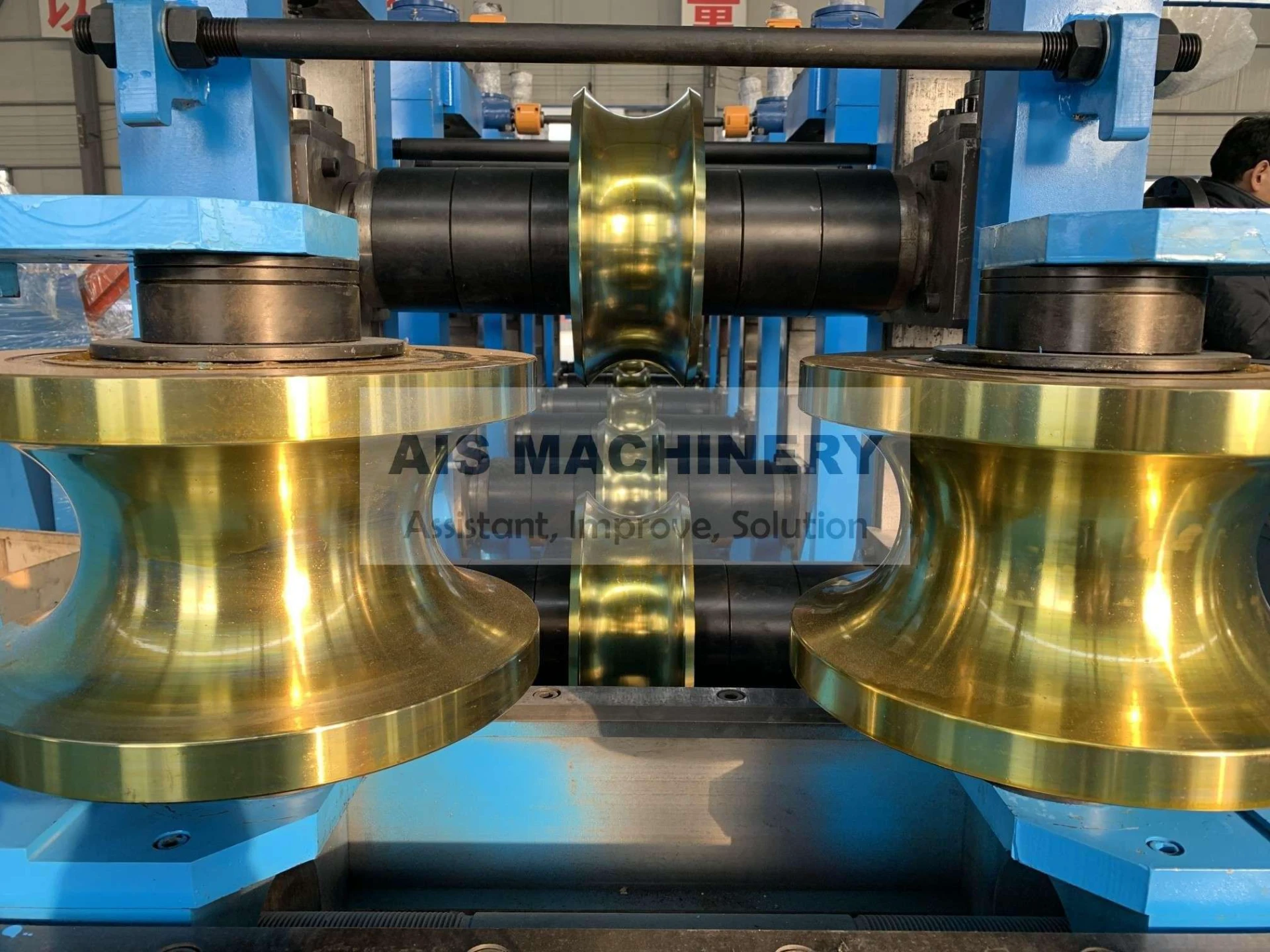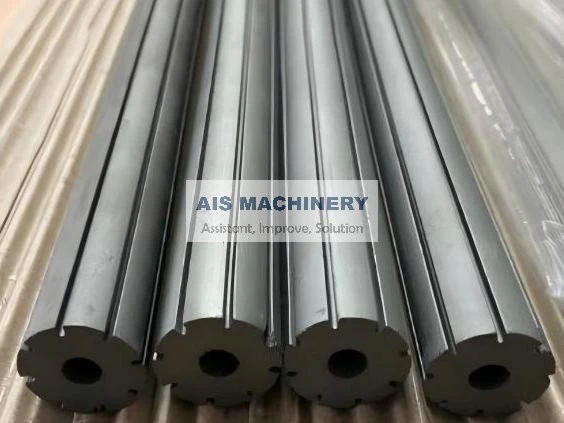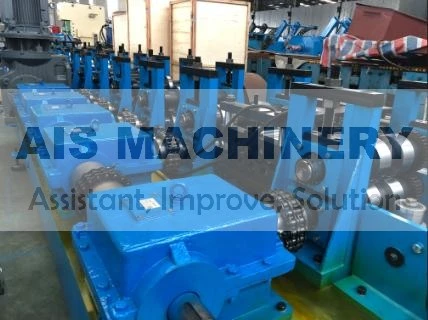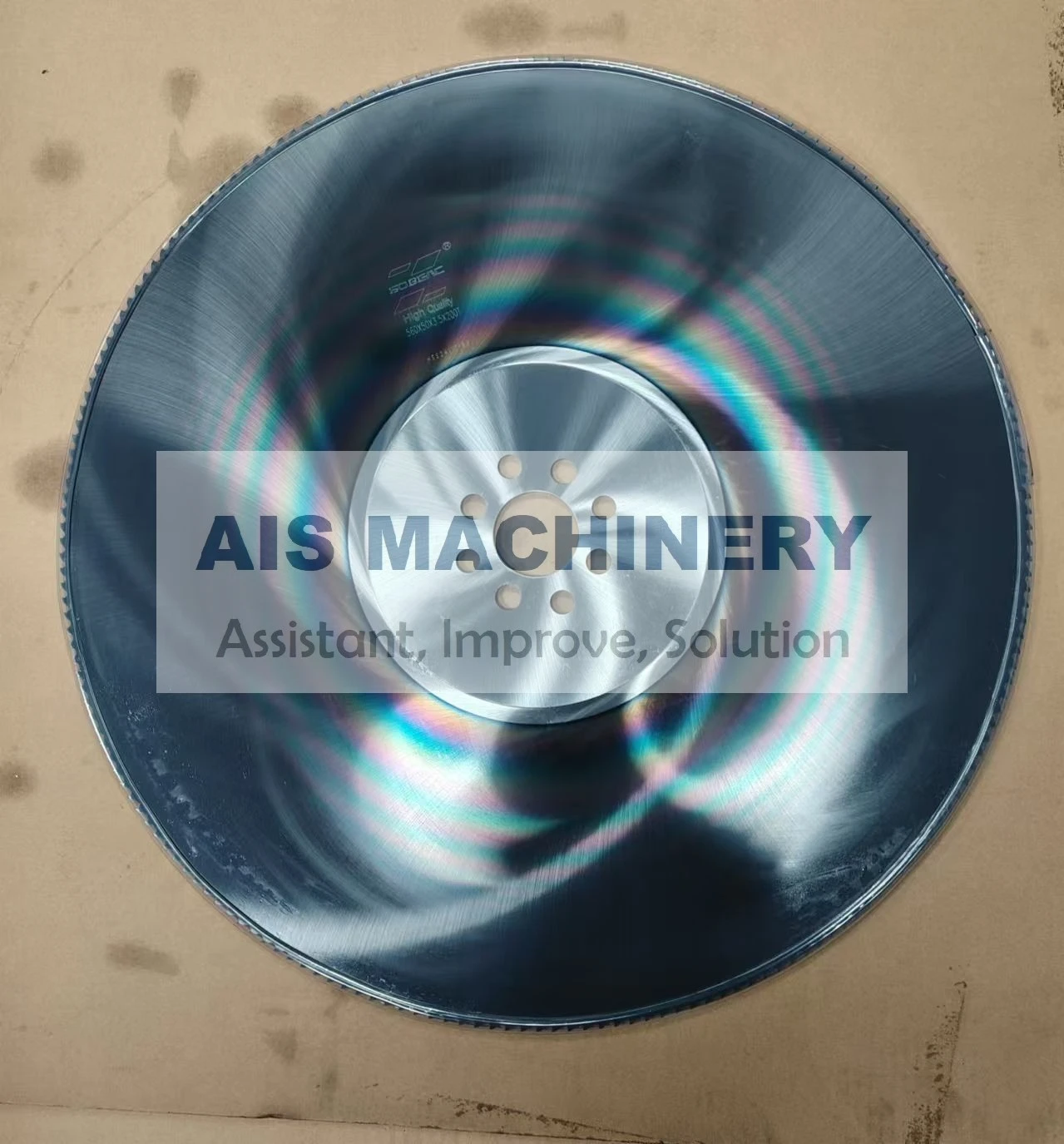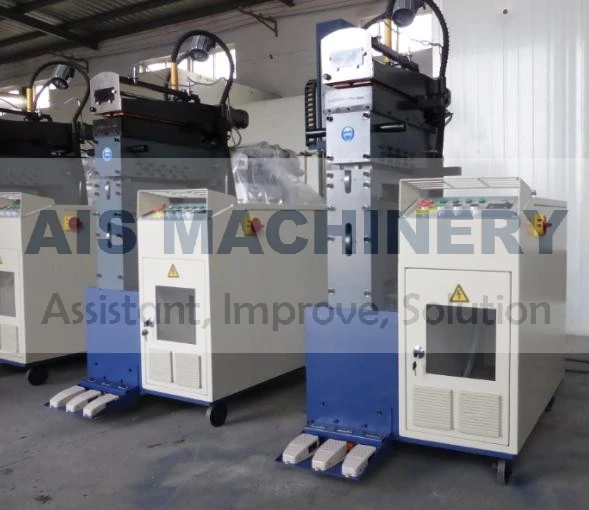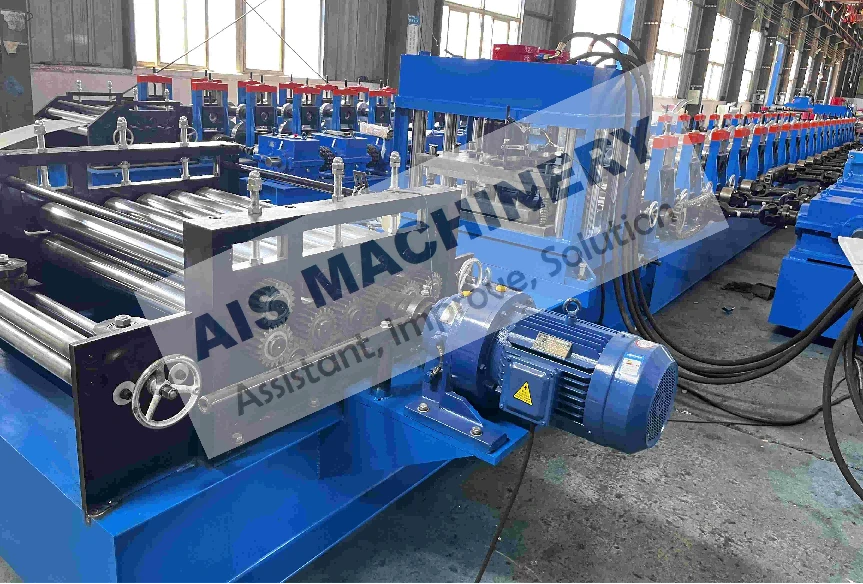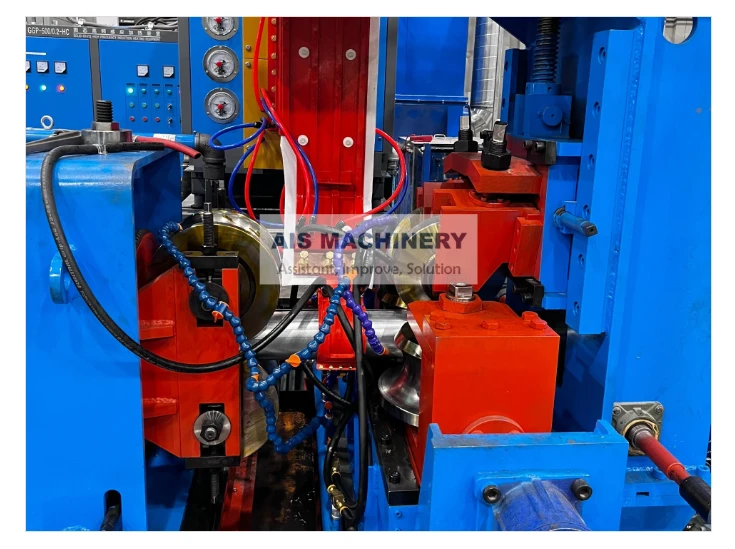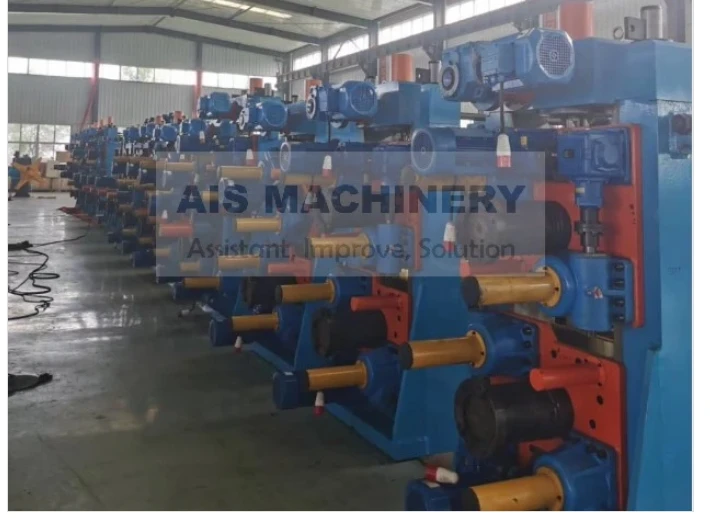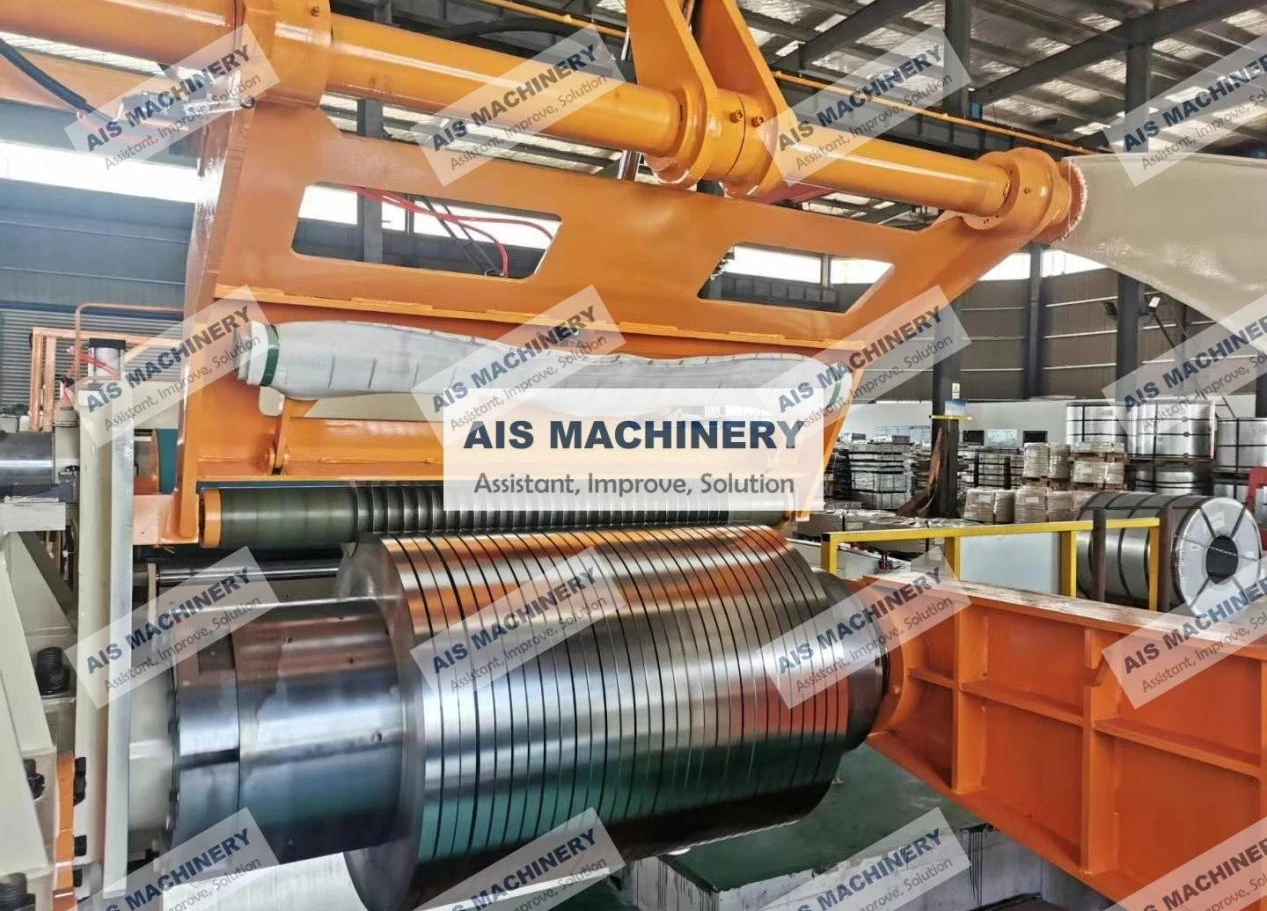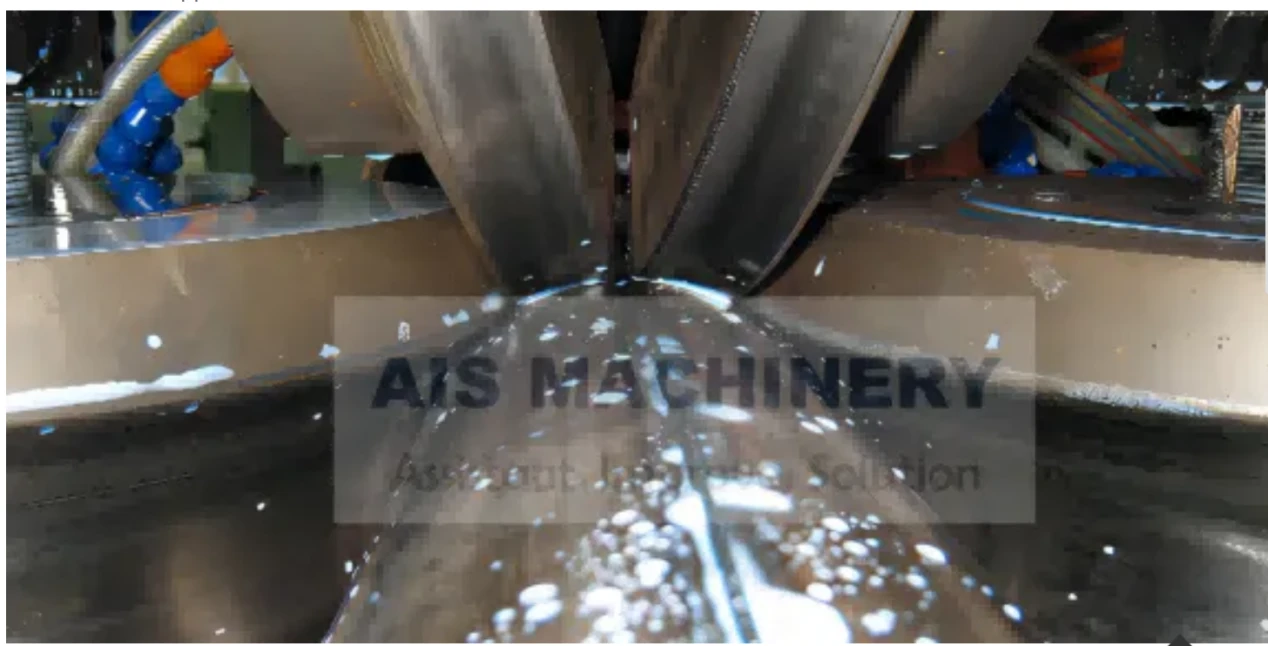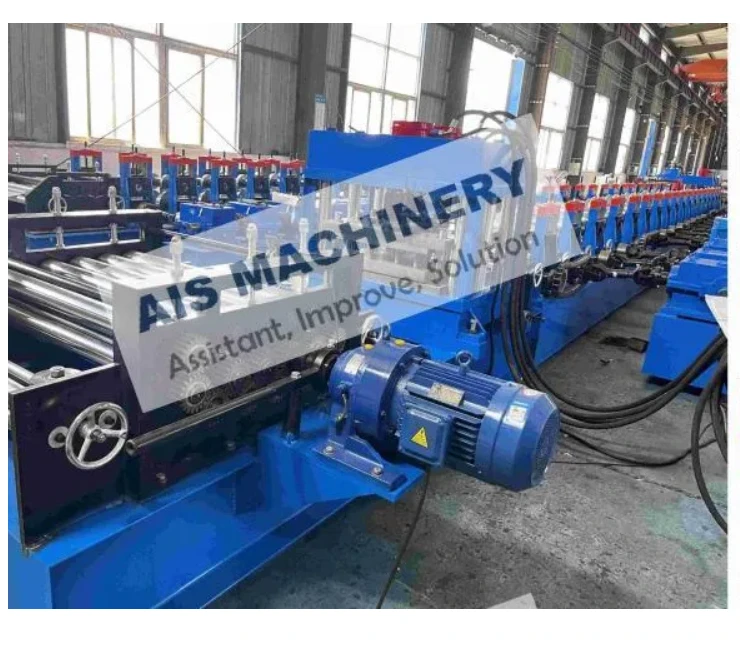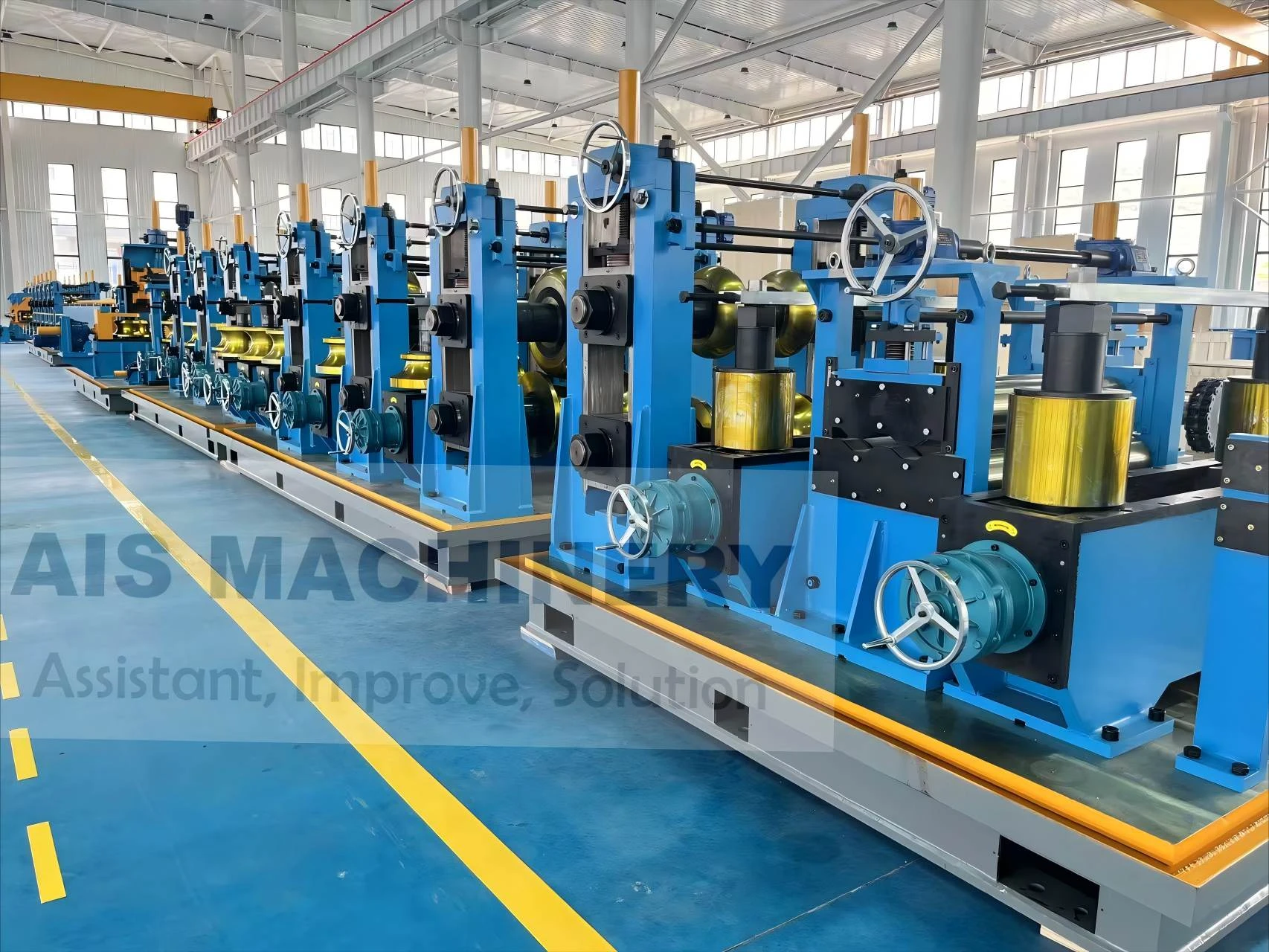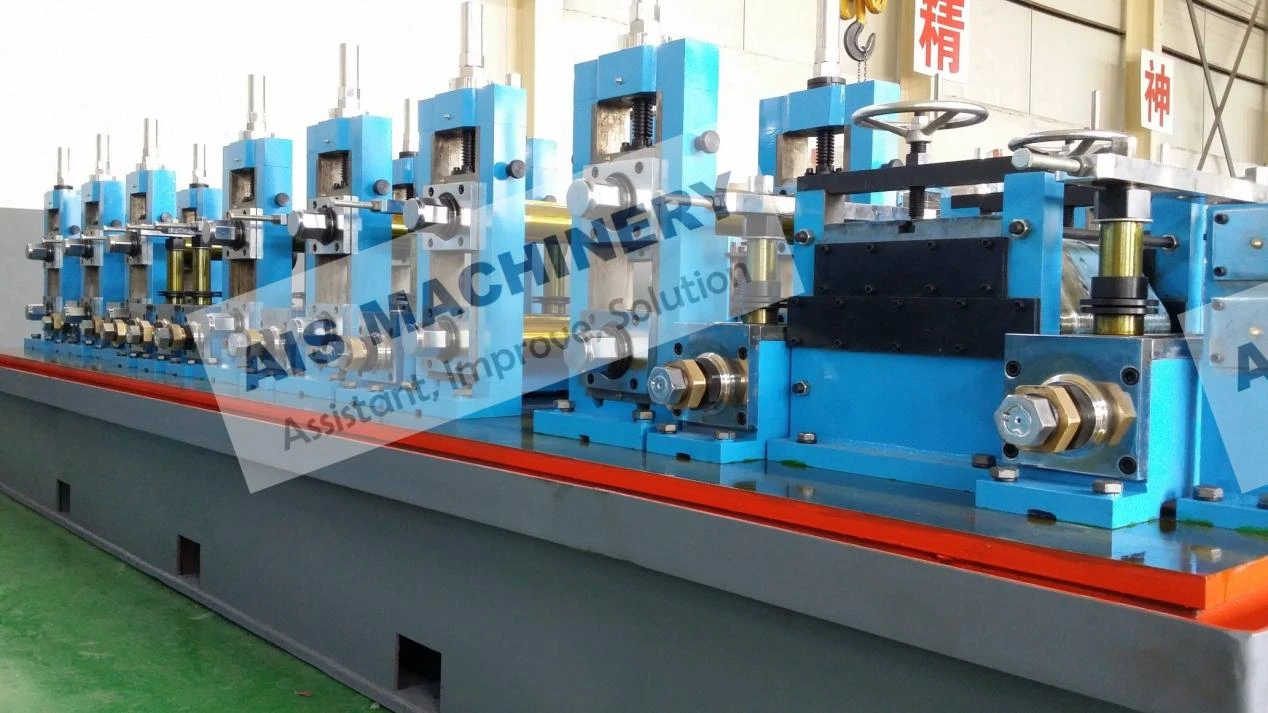-
 Tel:86-15176910262
Tel:86-15176910262
-

Search
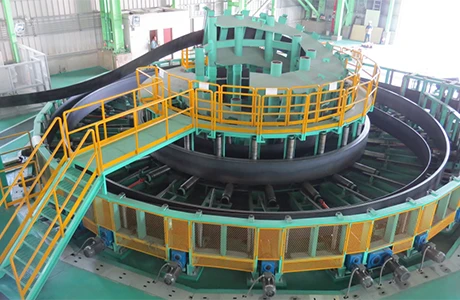
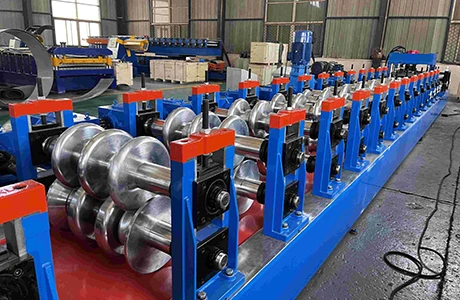
Cold Roll Forming Machine Speed Control
Jul . 28, 2025 14:53
Precise speed control is a defining feature of efficient cold roll forming machine operations, directly influencing product quality, material utilization, and overall production throughput. As a wholesaler, understanding how to optimize speed in cold roll machine systems and refine cold roll forming processes enables partners to select equipment that aligns with their manufacturing goals—whether prioritizing high-volume output or intricate profile accuracy. HEBEI AIS MACHINERY EQUIPMENT CO.,LTD specializes in engineering cold roll forming machine systems with advanced speed control technologies, ensuring seamless performance across diverse applications from automotive parts to construction components. This guide explores the principles of speed control in cold roll forming machine operations, strategies for optimizing cold roll machine performance, and how cold roll forming parameters vary by material and profile, empowering wholesalers to support customers in achieving consistent, high-quality production.
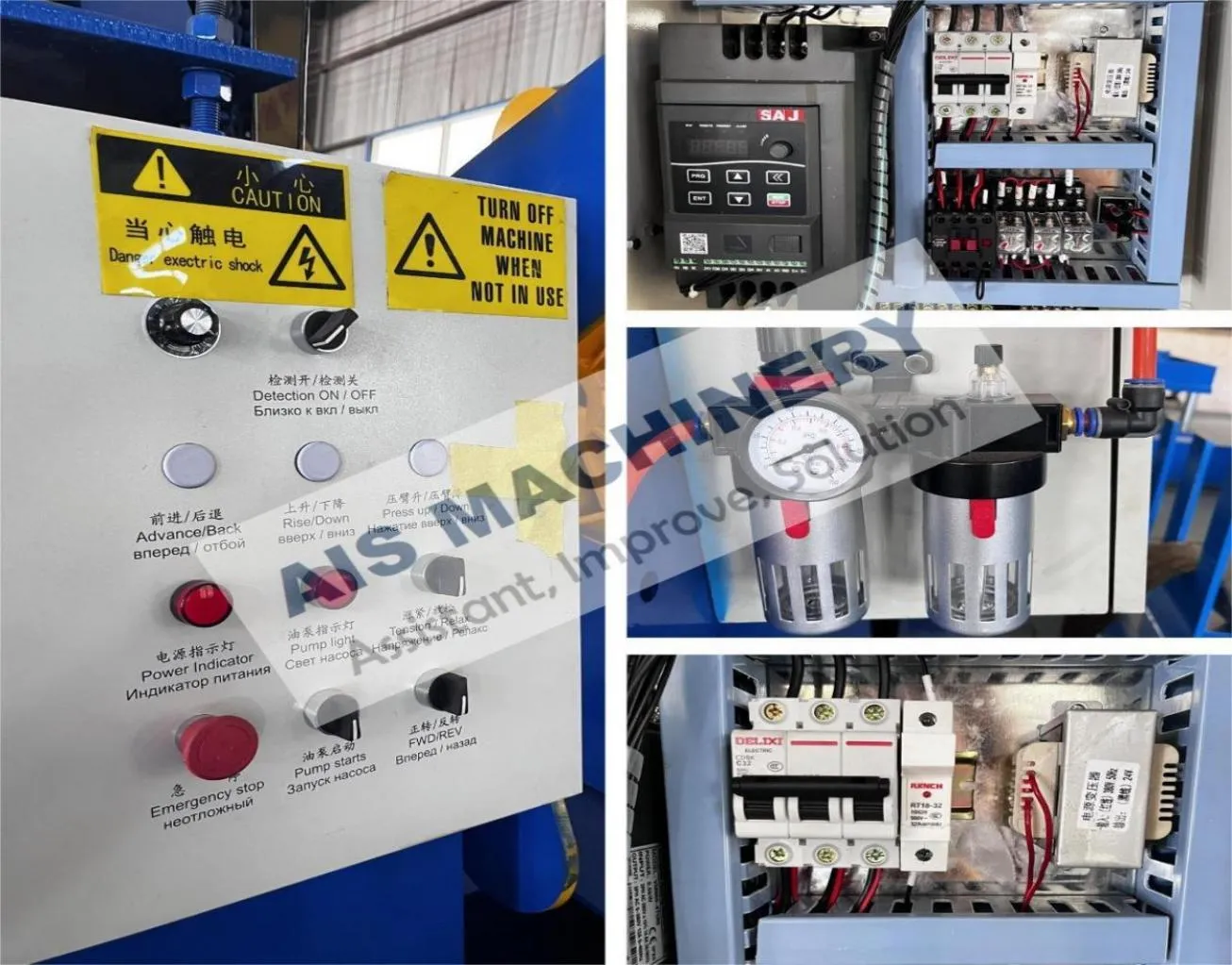
Cold Roll Forming Machine Speed Control Fundamentals
Core Components of Speed Regulation
- Variable Frequency Drives (VFDs): VFDs are the backbone of cold roll forming machine speed control, allowing operators to adjust line speeds from 5 m/min to 100 m/min with precision. HEBEI AIS MACHINERY EQUIPMENT CO.,LTD integrates VFDs rated for 15–100 kW in their cold roll forming machine models, enabling smooth acceleration and deceleration to prevent material slippage or deformation during cold roll forming.
- Servo Motors for Synchronization: In multi-stage cold roll forming machinesetups, servo motors ensure each forming station operates at synchronized speeds, critical for maintaining profile accuracy. HEBEI AIS MACHINERY EQUIPMENT CO.,LTD.’s cold roll forming machine systems achieve synchronization within ±0.1% tolerance, even when processing thin-gauge materials prone to stretching.
- PLC-Based Control Systems: Programmable Logic Controllers (PLCs) centralize cold roll forming machinespeed management, storing pre-set speed profiles for different cold roll forming Operators can recall parameters for specific profiles—such as C-channels or roof panels—reducing setup time by up to 40%. HEBEI AIS MACHINERY EQUIPMENT CO.,LTD.’s user-friendly HMI interfaces simplify speed adjustments, with real-time displays of line speed and torque.
Speed vs. Profile Complexity Trade-Offs
- Simple Profiles: Basic shapes like angle irons or flat bars allow cold roll forming machinesystems to operate at higher speeds (60–100 m/min), as they require fewer forming stages. HEBEI AIS MACHINERY EQUIPMENT CO.,LTD.’s entry-level cold roll forming machine models excel in these applications, using optimized roller designs that minimize material stress at high speeds.
- Complex Profiles: Intricate profiles with multiple bends or narrow tolerances—such as automotive door frames—demand slower cold roll forming machinespeeds (10–30 m/min) to ensure each forming step is completed accurately. HEBEI AIS MACHINERY EQUIPMENT CO.,LTD.’s advanced systems include incremental speed adjustments between stations, with later stages running 5–10% faster to account for material springback.
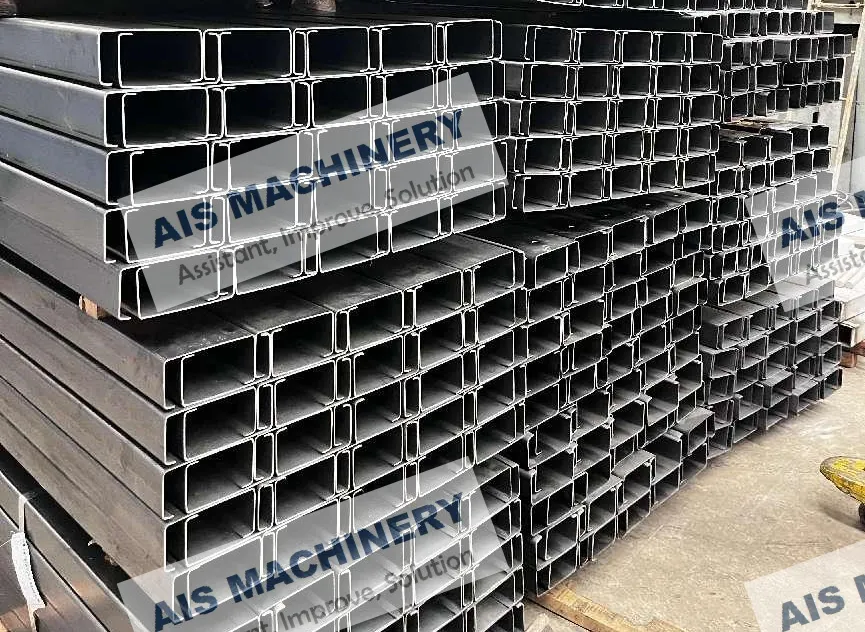
Cold Roll Machine Speed Optimization for Material Types
Mild Steel and Low-Carbon Alloys
- Speed Capabilities: cold roll machinesystems process mild steel most efficiently, with optimal speeds ranging from 30–80 m/min depending on thickness (0.3mm–3mm). The material’s ductility allows aggressive cold roll forming without cracking, making it ideal for high-volume production. HEBEI AIS MACHINERY EQUIPMENT CO.,LTD.’s cold roll machine models for mild steel feature hardened rollers (55–60 HRC) that maintain precision even at maximum speed.
- Lubrication Requirements: Proper lubrication is critical for high-speed cold roll machineoperations with mild steel, reducing friction between rollers and material to prevent galling. HEBEI AIS MACHINERY EQUIPMENT CO.,LTD. integrates automatic lubrication systems that apply dry film lubricants at 10–15 second intervals, ensuring consistent performance in cold roll forming lines running 24/7.
High-Strength and Stainless Steels
- Speed Limitations: High-strength steel (HSS) and stainless steel require slower cold roll machinespeeds (10–40 m/min) due to their lower ductility and higher springback tendencies. Thicker gauges (3mm–6mm) may necessitate speeds as low as 5 m/min to avoid edge cracking. HEBEI AIS MACHINERY EQUIPMENT CO.,LTD.’s heavy-duty cold roll machine systems use reinforced roller stands and increased pass counts to accommodate these materials in cold roll forming
- Roller Material Compatibility: cold roll formingof stainless steel demands corrosion-resistant rollers to prevent material contamination. HEBEI AIS MACHINERY EQUIPMENT CO.,LTD.’s cold roll machine models for stainless steel feature chrome-plated rollers or tool steel with 12% chromium content, ensuring both wear resistance and material purity during high-speed forming.
Cold Roll Forming Speed and Profile Complexity
Simple vs. Complex Profile Speed Dynamics
- Basic Shapes: Simple profiles like U-channels or Z-purlins allow cold roll formingat 60–90 m/min, as they require 8–12 forming stations. HEBEI AIS MACHINERY EQUIPMENT CO.,LTD.’s cold roll forming machine systems for these profiles use gradual bend angles (2–5° per station) that support high speeds without compromising dimensional accuracy.
- Intricate Profiles: Profiles with multiple bends, such as electrical enclosures or automotive seat rails, require 15–25 forming stations and slower cold roll formingspeeds (15–40 m/min). HEBEI AIS MACHINERY EQUIPMENT CO.,LTD.’s precision cold roll forming machine models include servo-controlled side rollers that adjust dynamically, ensuring each bend is formed correctly even at moderate speeds.
Length and Cut-to-Length Speed Coordination
- Continuous vs. Cut-to-Length: In continuous cold roll forming, speed is limited by downstream processes like punching or bending, typically ranging from 30–60 m/min. Cut-to-length operations require precise synchronization between cold roll forming machinespeed and cutting systems to avoid profile distortion. HEBEI AIS MACHINERY EQUIPMENT CO.,LTD.’s systems use encoder feedback to match cutting speed to forming speed within ±1mm tolerance, even for lengths up to 6 meters.
- Acceleration/Deceleration Ramps: cold roll forminglines must accelerate gradually to prevent material slippage, especially with thin gauges. HEBEI AIS MACHINERY EQUIPMENT CO.,LTD.’s cold roll forming machine systems program acceleration ramps (5–10 seconds to reach target speed) and deceleration buffers, ensuring stable material feed during start-stop cycles.
Table: Typical Speed Ranges for cold roll forming machine Applications
|
Material Type |
Profile Complexity |
Thickness (mm) |
cold roll forming machine Speed (m/min) |
HEBEI AIS MACHINERY EQUIPMENT CO.,LTD. Model |
|
Mild Steel |
Simple (U-channel) |
0.5–2 |
60–90 |
CRF-MS-100 |
|
Mild Steel |
Complex (Enclosure) |
1–3 |
20–40 |
CRF-MS-200 |
|
Stainless Steel |
Simple (Angle) |
0.5–1.5 |
40–60 |
CRF-SS-150 |
|
High-Strength Steel |
Medium (Beam) |
3–5 |
10–25 |
CRF-HSS-300 |
Cold Roll Forming Machine FAQS
How does material thickness affect cold roll forming machine speed?
Material thickness directly impacts cold roll forming machine speed, with thicker materials requiring slower speeds to ensure proper forming without cracking. For example, 0.5mm mild steel can be processed at 60–90 m/min, while 5mm high-strength steel may require speeds as low as 10–15 m/min. HEBEI AIS MACHINERY EQUIPMENT CO.,LTD.’s cold roll forming machine models feature thickness sensors that automatically adjust speed and roller pressure, ensuring optimal cold roll forming conditions across different gauges without manual intervention.
What role does lubrication play in maintaining cold roll machine speed?
Lubrication is critical for maintaining consistent cold roll machine speed, as it reduces friction between rollers and material, preventing galling and material drag that can slow production. Inadequate lubrication may force operators to reduce speed by 20–30% to avoid defects. HEBEI AIS MACHINERY EQUIPMENT CO.,LTD.’s cold roll machine systems include programmable lubrication systems that adjust application frequency based on speed and material—applying more lubricant at 80 m/min than at 20 m/min—ensuring smooth cold roll forming at all operating speeds.
Can a cold roll forming line maintain speed while switching between profiles?
Yes, a cold roll forming line can maintain speed during profile changes with quick-change roller systems and pre-programmed speed profiles. HEBEI AIS MACHINERY EQUIPMENT CO.,LTD.’s advanced cold roll forming machine models feature tool-less roller changeovers (completed in 15–30 minutes) and PLC-stored parameters for 50+ profiles, allowing operators to switch between simple and complex shapes without reducing line speed. This minimizes downtime and maximizes throughput in flexible manufacturing environments.
How do cold roll forming machine speed controls prevent material stretching?
cold roll forming machine speed controls prevent material stretching through synchronized roller speeds across all forming stations and tension monitoring systems. HEBEI AIS MACHINERY EQUIPMENT CO.,LTD.’s systems use load cells to detect tension variations; if stretching is detected (typically above 0.5% elongation), the PLC automatically reduces speed by 5–10% and adjusts downstream roller pressure. This ensures consistent material flow through the cold roll forming process, preserving dimensional accuracy even for thin-gauge (≤0.5mm) materials.
What maintenance is required to ensure stable speed control in cold roll machine systems?
Stable speed control in cold roll machine systems requires regular maintenance of drive components, including VFD calibration, gearbox lubrication, and roller alignment checks. HEBEI AIS MACHINERY EQUIPMENT CO.,LTD. recommends monthly inspection of drive belts for wear (which can cause speed fluctuations) and quarterly calibration of speed sensors to ensure accuracy within ±0.1 m/min. Additionally, cleaning roller surfaces of material buildup prevents uneven friction that can disrupt cold roll forming speed, especially when processing sticky materials like aluminum.
Effective speed control in cold roll forming machine operations is a balance of material properties, profile complexity, and equipment capabilities. By understanding how cold roll machine speed interacts with different metals and shapes, and leveraging HEBEI AIS MACHINERY EQUIPMENT CO.,LTD.’s advanced control systems, manufacturers can achieve both high productivity and consistent quality. As a wholesaler, emphasizing these speed optimization strategies—paired with the right equipment recommendations—positions you as a critical partner in your customers’ success. HEBEI AIS MACHINERY EQUIPMENT CO.,LTD.’s commitment to engineering versatile, speed-adjustable cold roll forming machine systems ensures that regardless of material or profile, your customers can maintain optimal performance, reducing waste and maximizing output in every cold roll forming application.
Related Products
Related News
Send a Message
Dear customer, thank you for your attention! We provide high-quality machinery and equipment and look forward to your orders. Please inform us of your needs and we will respond quickly!

